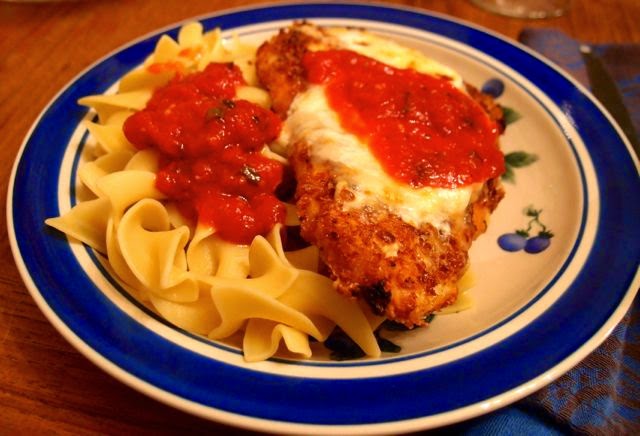September 14, 2014
Menu
Grilled Cheese Sandwich with Cheddar and Shallot
Grilled Sweet Corn
Homemade French Fries
three twins Mint Confetti Ice Cream Cones
Recipes
In the early days of the Food Network it seemed like it was the Emeril network. Chef Emeril Lagasse seemed to be on the air whenever you tuned in. Emeril became well known for his catch phrases including "Bam!" and "kick it up a notch". (He tells an
interesting story about the origin of Bam!)
. The dishes in this week's menu for Sunday dinner are not particularly special, but each, in its own way, is a kicked-up version of the standard preparation.
A grilled cheese sandwich is comfort food to many, but not to me. I grew up disliking cheese. I'm still unlikely to pick up a piece of cheese and eat it, but I have grown to like cheese as a part of other dishes. I have
made grilled cheese sandwiches for family members, but so far as I can remember I have never made one for myself. Grilled PB&J or grilled ham and Swiss, certainly, but not grilled cheese. When I saw the
America's Test Kitchen recipe for a "grown-up" grilled cheese sandwich I was sufficiently intrigued, despite my personal history with cheese. With another busy weekend requiring a meal that could be made without spending a lot of time in the kitchen, this recipe came to mind. Not only is it pretty easy but it would go well with the fresh local sweet corn that will soon be done for the season.

Grilled cheese sandwich: put a slice or two of cheese between slices of bread, butter the outside, and cook in a skillet until golden brown and the cheese has melted. This recipe is essentially that, but differs in several ways. The cheese is aged cheddar, not pre-sliced convenience cheese; the recipe recommended cheese that had been aged a year (but not more) but because of a memorable experience tasting sharp cheddar once, I chose a medium, 60-day, cheddar from Tillamook. Because aged cheddar is dry and doesn't melt well, it is combined in a food processor with brie and some white wine to form a cheese paste. Some minced shallots are added and this is spread between two slices of hearty white sandwich bread. A mixture of butter and Dijon mustard is spread on the outside and the sandwich is cooked slowly in a nonstick skillet. "Kicking it up!" While I should have cooked the sandwich longer so it would be even crispier, I enjoyed eating it. Judging from how fast the sandwich disappeared from Diane's plate, she liked it, too. I've been converted and might even try using a longer-aged cheese next time.

We are still enjoying fresh local sweet corn. Instead of just steaming it in the microwave, again, I used a Test Kitchen recipe which I adapted slightly. The corn was cleaned, sprayed with vegetable oil, and seasoned with salt and pepper. It was then grilled for about 10 minutes, turning as needed to cook all sides. The hot corn was placed in a glass dish with some butter that had been seasoned with chopped basil and parsley. "Bam!" This was then sealed with platstic wrap and cooked in the microwave for three minutes. While neither Diane nor I could taste the basil or parsley, we did enjoy the slightly chewier texture of the corn and the wonderful smoky flavor that was provided by grilling.
We could have had potato chips or frozen french fries. But no, I
wanted to make my own from scratch. I used our mandoline (carefully, as always) to make ¼″ square fries from a single russet potato, with skins. These were rinsed to remove surface starch then stored in ice water until time to cook the potatoes. They were deep fried at 325°, removed from the oil, then cooked until brown at 350°. They could have been crisper but they were still very good and better than potato chips or frozen fries. "Oh yeah, babe."
For dessert we often have ice cream, but this ice cream was special. While visiting San Francisco a few months ago, we stopped at this little ice cream shop, "three twins ice cream", in the Lower Haight district and had the best bittersweet chocolate ice cream ever. A little research revealed that they sell their ice cream in supermarkets, too, and we found it was just as good. This week we tried a new flavor, a version of mint and chip called
Mint Confetti, which is also excellent: rich, smooth, and creamy with just the right amount of fresh mint flavor accented with pieces of dark chocolate.














































